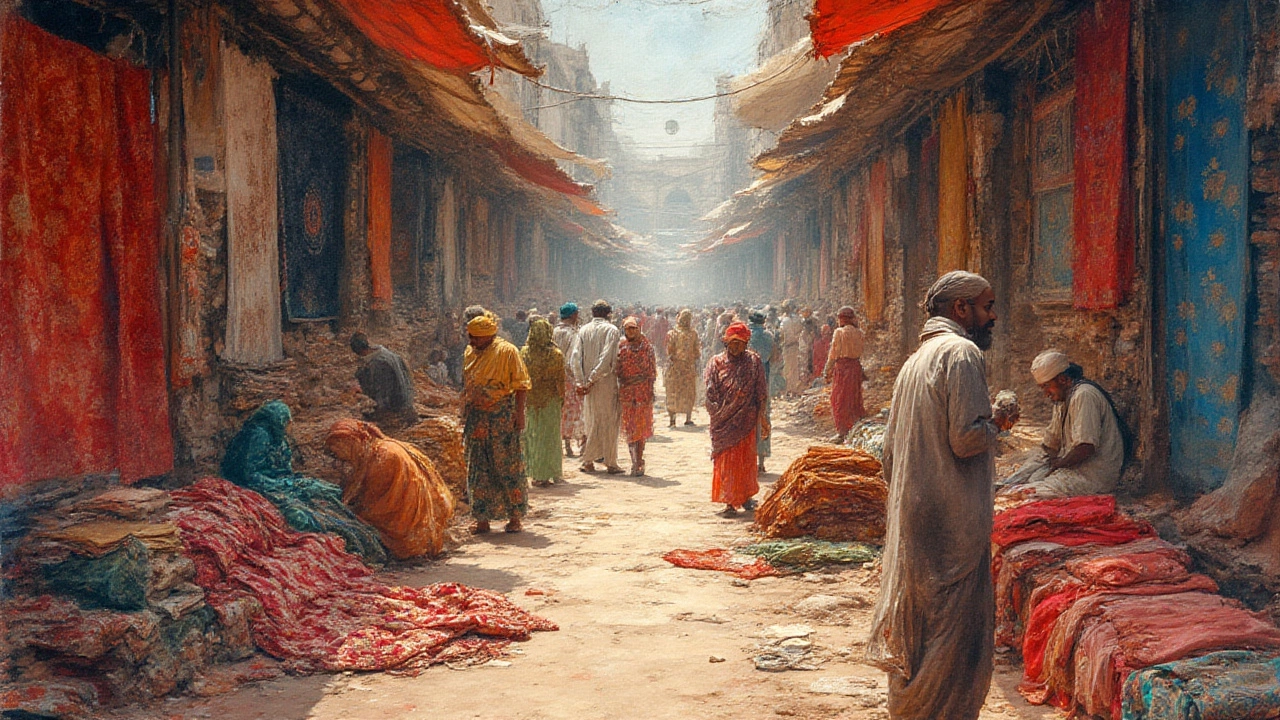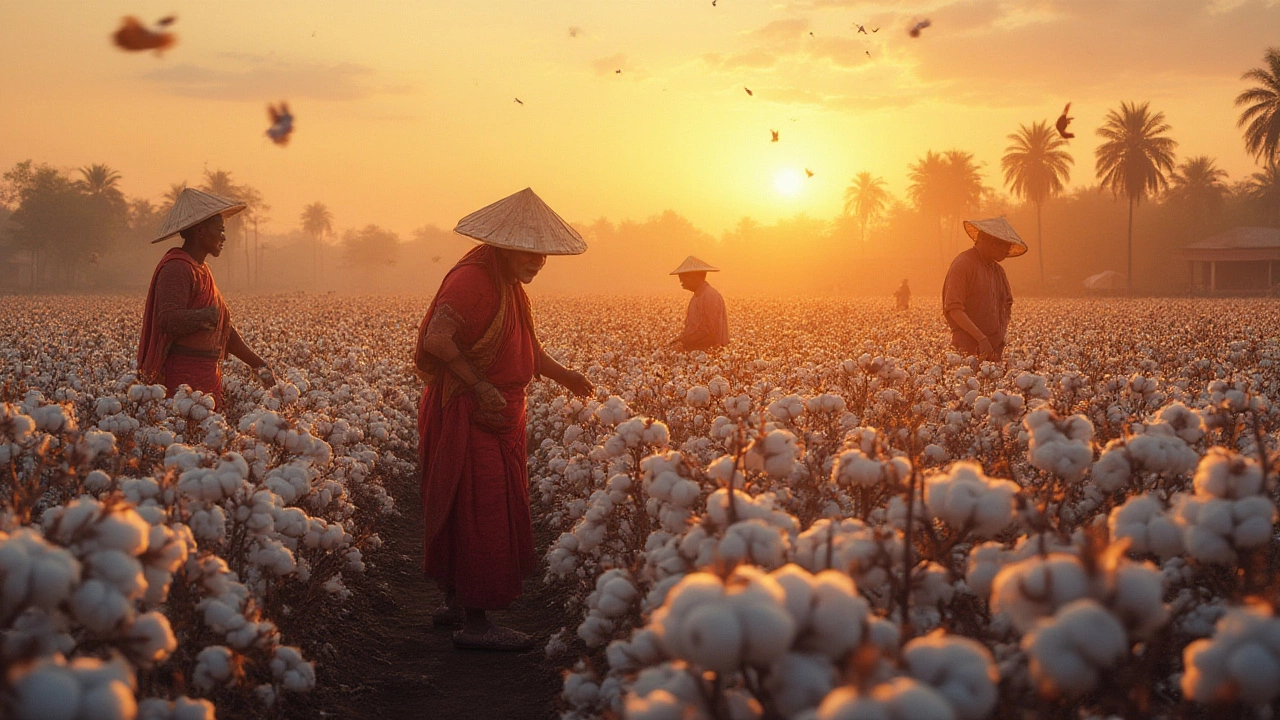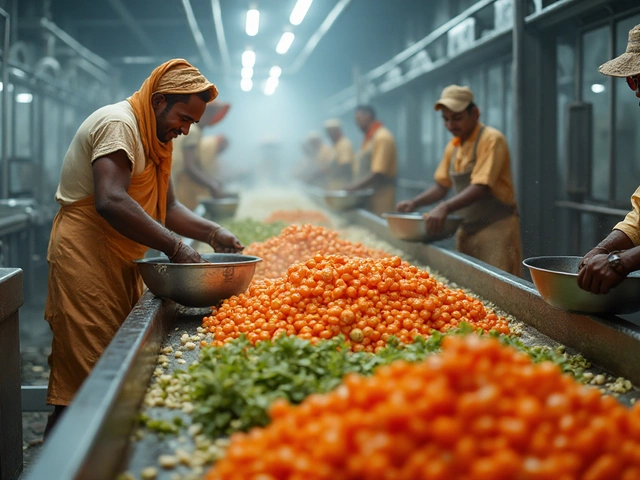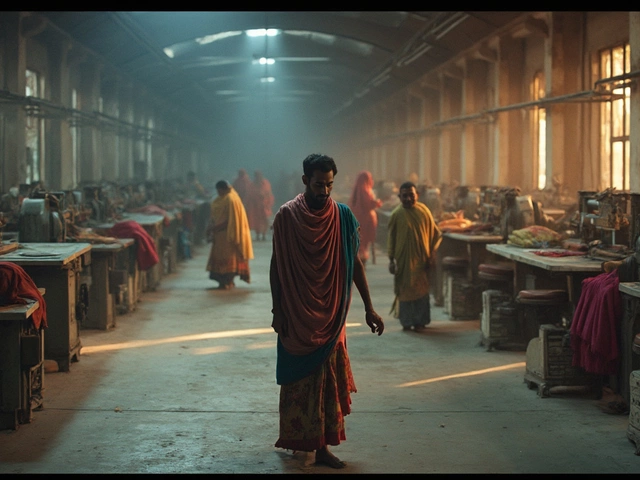Silk has that glossy finish, polyester shows off strength, and wool gives cozy warmth—but when you talk about the queen of textiles, you’re really talking about cotton. It’s everywhere: in your bed sheets, your favorite tee, even the dollar bills in your wallet. Over 75% of the world’s clothing contains at least some cotton. Flip over any clothing tag, and you’re betting on cotton being there. From comfort to versatility and a genuinely interesting story of how it became the backbone of entire economies, nothing dethrones cotton. Ever wondered why this humble plant fiber wears the textile crown? Strap in—history, industry, culture, and a few little-known tips are waiting to surprise you.
How Cotton Grew to Rule: A Brief History
If you went back 7,000 years, you’d find ancient civilizations in both India and Peru spinning and weaving cotton fibers. The Indus Valley settlers are credited with some of the earliest cotton fabrics. In the 1st century AD, Roman writers marveled at "cloths that grow on trees" coming from India. By the Middle Ages, the Arabic world was refining cotton processing, and "muslin" imported from Bengal was sought after everywhere in Europe. By the 18th century, the Industrial Revolution turned cotton from a luxury to an everyday essential. The spinning jenny, water frame, and later, Eli Whitney’s cotton gin in 1793 massively boosted cotton’s productivity. Suddenly, millions of tons of cotton thread with relatively little labor. England, in 1830, was using about 266 million pounds of raw cotton a year, much of it picked under harsh conditions in the American South.
Cotton didn’t just change outfits; it changed entire societies. The fiber’s production fueled the transatlantic slave trade and the rise of factory towns, forcing hard questions that still reverberate. Today, China, India, the United States, Brazil, and Pakistan dominate production, and urban workers in Bangladesh or Vietnam handle much of the world’s cotton fabric and clothing. Those shirts stacked up in malls globally? Cotton probably started the journey on a farm in one of these countries.
The dominance of cotton has also prompted scientists to create drought-resistant and pest-resistant cultivars, making it tougher than ever in hot, dry, or salty soils. The numbers don’t lie: about 25 million tons of cotton get produced every year worldwide. One acre of cotton can yield up to 1,500 pounds of fiber—enough for about 1,200 T-shirts. Even with stiff competition from synthetics, cotton remains the most widely used natural fiber and packs the most cultural punch.
The Crown’s Secret Powers: What Makes Cotton Reign Supreme?
Why is cotton the queen of textiles, and not silk or linen? For one, cotton is soft but surprisingly tough; it doesn’t scratch or irritate like wool, and it’s not as delicate as silk. Ever noticed your towels are always cotton? That’s because the fiber can soak up to 27 times its own weight in water—ideal for towels, socks, underwear, and summer shirts.
Let’s talk breathability. On a sweltering day, you want clothes that let your skin "breathe." Cotton fibers are irresistible partly because they move air and moisture right away from your skin, keeping you drier and cooler. Synthetic fibers like polyester tend to trap heat, but cotton manages body temp like a pro. Even in baby clothes, cotton tops every list: no itching, no overheating, just safety and comfort. Some cottons, like Egyptian or Pima, have extra-long staple fibers, making the finished fabric smoother, shinier, and far stronger. No wonder these grades fetch higher prices.
It’s not just comfort and breathability. Cotton takes dye really well. Think of your favorite pair of faded blue jeans: those are "denim," woven from cotton threads that easily absorb indigo. On top of that, cotton fabrics can be washed in hot water, ironed, and reused for years. No other natural textile can take the same level of daily abuse and keep looking decent. People are charmed by cotton for its safety, too—it’s generally hypoallergenic and less likely to cause allergies versus wool or synthetic fabrics. For hospitals and babies, it’s the safest textile bet.
Now let’s throw in some data. Here’s a handy queen of textiles snapshot you might find useful:
| Natural Fiber | Global Production (Million Tons/year) | Key Strength |
|---|---|---|
| Cotton | 25.0 | Absorbency, Versatility |
| Wool | 1.2 | Warmth |
| Silk | 0.12 | Luster, Fineness |
| Linen | 0.65 | Coolness, Strength |
One more ace about cotton: it grows in so many climates. Silk worms need lots of care, flax (for linen) grows best in just a few countries, but cotton? It turns up just about anywhere there’s sun and water. That’s global reach few can match.

Inside the Cotton Industry: The Power and Problems
Cotton doesn’t just dress people; it powers economies. India and China harvest over half the world’s cotton crop. In the U.S., the cotton industry adds $21 billion to the annual economy and supports over 125,000 jobs directly, plus millions more indirectly—from seed suppliers and ginners to textile designers and logistics operators.
But the story isn’t all soft and fuzzy. Cotton plantations have a rough legacy, especially in the American South, where slavery made it possible to meet demand. By the 1860s, "King Cotton" had made Southern states wealthier but deepened divisions that would explode during the Civil War. Globally, cotton farming still uses a shocking amount of water—according to the World Wildlife Fund, it can take 2,700 liters to produce a single t-shirt. And the chemical battle to fight off insects like the boll weevil means plenty of pesticides, though modern genetically modified (GM) cotton has slashed that need in many places by up to 50%.
Workers’ conditions can still be a mess, especially in “fast fashion” sweatshops. Some brands are trying to fix this with certifications like "Better Cotton Initiative" or "Organic Cotton Standard," but ethical shoppers need to check more than just the price tag. There are signs of improvement, though. New water-saving irrigation systems, organic practices, and even recycled cotton blends are lessening cotton’s environmental impact. Tech companies now use AI and satellite imagery to help farmers plant and harvest more efficiently. Cottonseed—once a useless husk—is pressed into oil or fed to livestock, nothing goes to waste anymore.
Major brands—think Levi's, Nike, and H&M—have all pledged to increase their sustainable cotton use. Even NASA makes astronaut underlayers from high-grade cotton for its “next to skin” properties. So, while there’s still a long way to go, the cotton industry is changing for the better, balancing ancient methods with cutting-edge science.
Tips for Choosing and Caring for Cotton—And Making It Last
Not all cottons are created equal, and picking the right type can seriously affect how long your textiles last. If you’re shelling out extra for luxury bedsheets, look for long-staple varieties like Egyptian, Pima, or Supima cotton. These have longer fibers and feel silkier, but stay strong—even after endless washes. Steer clear of threads labeled “100% cotton” without more detail; it could mean short-staple cotton that pills and wears out fast.
Want your cotton stuff to keep looking sharp? Wash them in cold water—this saves energy and keeps fibers from breaking down. Use a gentle detergent and skip the fabric softener if you want towels to stay absorbent. Hang dry whenever possible; tumble-dry on low if you need speed. Use a hot iron for crisp shirts, but flip prints and colors inside out to dodge fading. Try to buy organic or certified cotton where you can; it costs a little more but helps cut down pesticide use, which is better for everyone, from farmers to wearers. When clothes do wear out, get creative—old tees make great cleaning rags, or give them to textile recyclers turning cotton waste into paper or even insulation.
Looking for hints on picking the best products? Check the weave on cotton shirts and sheets—the tighter, the longer they last. Avoid cheap “no iron” finishes; they’re full of plastic and can irritate sensitive skin. When you spot the “GOTS” (Global Organic Textile Standard) or “OEKO-TEX” Standard 100 badges, that means products have passed tough tests for harmful chemicals.
Then there’s denim, a cotton icon most of us can’t live without. If you want jeans to fit perfectly, buy them snug—they stretch out. Wash denim rarely, and when you do, use cold water and air dry; it keeps the indigo and fiber intact. And if you care about the environment, thrift jeans or buy ones with at least some recycled cotton. Trust me, it makes a difference.
The bottom line? Whether you’re in the market for a crisp white shirt or marathon-quality sports socks, cotton stands the test for comfort, durability, and global cool factor. It’s truly earned the right to be called the queen of textiles.





